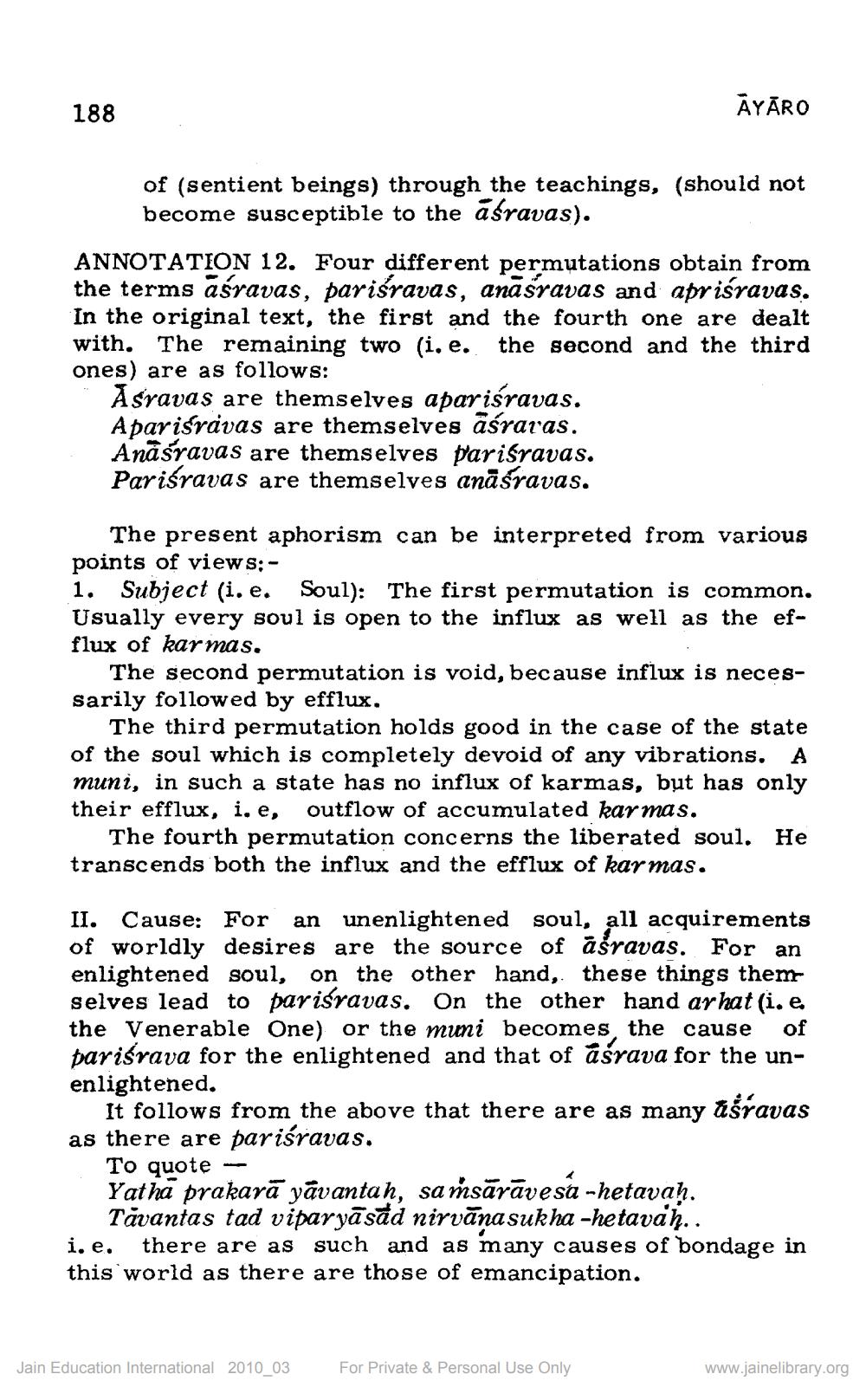________________
188
AYĀRO
of (sentient beings) through the teachings, (should not become susceptible to the asravas).
ANNOTATION 12. Four different permutations obtain from the terms aśravas, parisravas, anāsravas and apriśravas. In the original text, the first and the fourth one are dealt with. The remaining two (i.e. the second and the third ones) are as follows:
Asravas are themselves aparisravas. Aparisravas are themselves aśraras. Anaśravas are themselves parisravas. Pariśravas are themselves anāśravas.
The present aphorism can be interpreted from various points of views:1. Subject (i.e. Soul): The first permutation is common. Usually every soul is open to the influx as well as the efflux of kar mas.
The second permutation is void, because influx is necessarily followed by efflux,
The third permutation holds good in the case of the state of the soul which is completely devoid of any vibrations. A muni, in such a state has no influx of karmas, but has only their efflux, i, e, outflow of accumulated kar ma
The fourth permutation concerns the liberated soul. He transcends both the influx and the efflux of kar mas.
II. Cause: For an unenlightened soul, all acquirements of worldly desires are the source of āšravas. For an enlightened soul, on the other hand, these things them selves lead to parisravas. On the other hand ar hat(i.e. the Venerable One) or the mui becomes, the cause of parisrava for the enlightened and that of aśrava for the unenlightened.
It follows from the above that there are as many ašravas as there are pariśravas.
To quote --- Yathā prakarā yāvantah, saṁsārāvesa -hetavah.
Tāvantas tad viparyāsăd nirvānasukha -hetavah.. i.e. there are as such and as many causes of bondage in this world as there are those of emancipation.
Jain Education International 2010_03
For Private & Personal Use Only
www.jainelibrary.org




